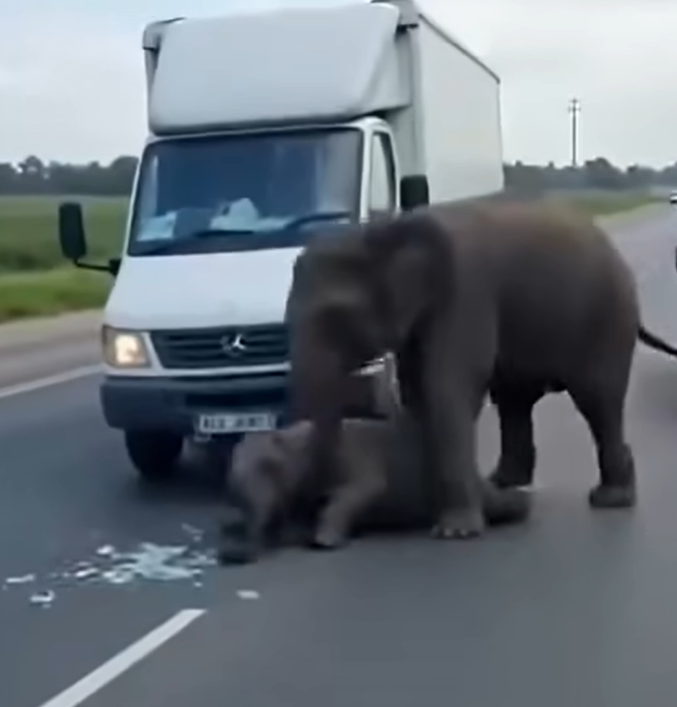At first, it was just a rush of motion — a dusty path, a speeding car, and then a sudden, harsh halt. In the quiet expanse of the African wilderness, where silence often carries more weight than sound, something tragic had occurred.
A baby elephant had been hit. And the wild, usually a place of harmony and life, was suddenly the scene of heartbreak.
The little calf, barely able to find its way on its own, collapsed near the tire tracks. The air was heavy — not only with dust but with the gravity of the moment.
Then came a sound no one could forget: a deep, resonant rumble rolling across the plains.
She was coming.
From the thicket, the mother appeared—massive, calm, and filled with a fierce intensity. But what happened next wasn’t anger. It was something much more profound.
With incredible gentleness, the mother elephant moved toward her injured calf. Her trunk traced with delicate care—first a touch, then a gentle stroke, then a nudge of encouragement. She stayed calm. She didn’t lash out. She comforted. She mourned. She waited.

Witnesses, some capturing the scene on their phones and others rooted in place, watched as she emitted soft rumbling sounds—a kind of soothing lullaby, scientists say, that elephants use to calm their young. This was more than just survival instinct. It was raw, unfiltered empathy.
And gradually, amazingly, the calf stirred. Wobbled. Then rose.
More Than Just a Moment — A Powerful Message
This wasn’t simply a viral video shared online. It was a window into the emotional complexity of one of Earth’s most magnificent creatures — and a reminder that wild animals experience pain, grief, and protection far more deeply than we often assume.
But the incident also sparked important questions. Why was a vehicle in such a fragile habitat? Was there adequate protection in place? And most importantly — are we truly doing enough to safeguard the natural homes of these creatures?
Conclusion: The Quiet Wisdom of Nature
In a world that often feels fractured and distant, the image of a mother elephant caring for her hurt calf cuts through the chaos. She didn’t rage. She didn’t flee. She stayed. She comforted. She showed us that love — in its purest, most instinctive form — knows no boundaries.
As the calf leaned against her, those watching were left with more than just a touching memory. They were left with a question: If she can show such compassion in crisis, why can’t we?




